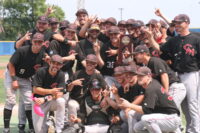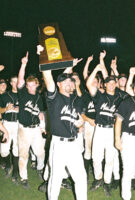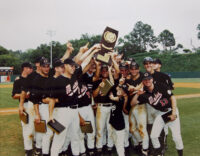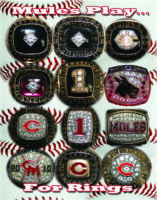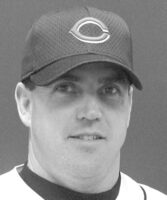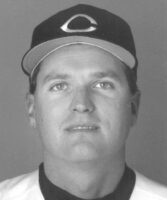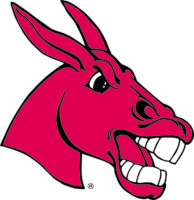Inductees
University of Central Missouri Baseball Program
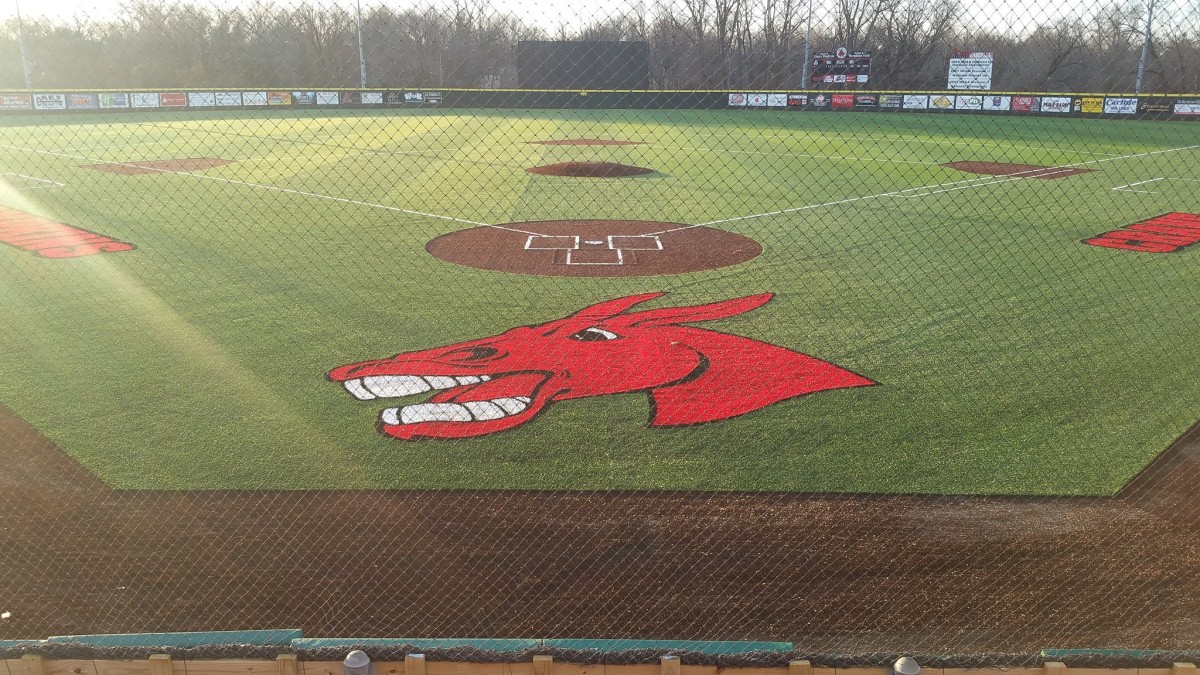
Tucked into a hillside in Warrensburg sits one of the most impressive baseball facilities in the country – complete with synthetic turf, four rows of chair-back seats between the dugouts, a grandstand of chair-back seats and dugout heaters.
Oh, and see that Morton building nearby? It houses indoor batting cages, a weight room and the umpires’ dressing room.
“It adds leverage to our recruiting pitch,” former Mules pitcher P.J. McGinnis said. “But beyond all that, do you want to win a ring? Do you want stories to tell your grandkids? That’s what you are going to get.”
No, you don’t see such facilities on most NCAA Division II campuses. But, then again, you don’t see a behemoth like the University of Central Missouri Baseball Program, either, and it’s why the Missouri Sports Hall of Fame is proud to induct Mules Baseball with the Class of 2017.
Certainly, a giant has risen from James R. Crane Stadium at Robert N. Tompkins Field.
Since the program’s inception in 1965, the Mules are 1,832-723-9. They have won two Division II national championships (1994, 2003), 17 regional championships and 25 Mid-America Intercollegiate Athletics Association titles. Some 23 first team All-Americans and five national Players of the Year have come from Central Missouri, with 74 players signing pro contracts – including 34 drafted by Major League Baseball clubs.
It’s no wonder UCM alum, Houston Astros owner and 2017 MSHOF inductee Jim Crane was the primary underwriter of the $1.2 million in facility upgrades in 1998 and provided another $1.1 million for the installation of synthetic turf in 2015.
Crane pitched for the Mules in the mid-1970s for Tompkins. Tompkins was 258-164-1 from 1965 to 1980.
The program began to win more consistently in the postseason in the late 1980s. Yet its national profile rocketed in 1994, when the Mules won their first D-II championship. The coach was Dave Van Horn, hired from Texarkana Junior College at the semester after Dennis Woody became a Kansas City Royals scout. It was Van Horn’s only season before he went on to success at Nebraska and now Arkansas.
“(Van Horn) had a very different approach than what we were used to. He just let us play. He made it fun,” said Bob Poisal, a pitcher who noted the Mules were overly wired to win, partly because several had been bypassed by D-I schools. “I remember he banned our third baseman (Rick Ladjevich) and center fielder (Eric Stuckenschneider) from the batting cage because they were in there too much.”
The 1994 Mules finished 51-11. They won the MIAA Tournament and the regional after surviving in the consolation bracket. In the national championship game, Central Missouri beat seven-time national champion Florida Southern, 14-9, after trailing 6-2 in the fifth. Ladjevich was the D-II Player of the Year, with Stuckenschneider and Poisal named All-Americans.
Those Mules gained momentum early in the season after taking D-I powerhouse Oklahoma State into extra innings.
“Jason Howser got on the team bus after that,” Poisal said, “and said, ‘If we can play with these guys, we can beat anybody.”
Prior to that season, Central Missouri had won only three regional titles (1974, 1989, 1990).
However, from 1995 to 2003 alone, the program was 418-91 under Hill, who guided the program to the NCAA Tournament in all nine of his seasons – including seven trips to the D-II College World Series.
A turning point was 1999, when the Mules didn’t win the regional in Warrensburg. “I made them stay and watch Rockhurst celebrate on our field,” said Hill, now the coach at Kansas State.
The 2003 national title team finished 51-7 as the Mules became the first team in D-II history to win 50 games in four consecutive seasons. That team featured pitcher Danny Powers, who won the title game to finish 10-0, as well as All-Americans Zach Norman and Joe Strada, with Phil Sobkow drafted in the 10th round by the Los Angeles Dodgers.
“The tradition had always been there,” Hill said. “For me, it was the kids’ passion that was phenomenal. We had blue-collar kids who loved to play baseball. They out-worked me.”
However, Hill didn’t let players shy away from the expectations.
“Fortunately,” Hill said, “we’d put them around the older guys to make sure no one got outside the bubble.”
Two key leaders made it all possible, Hill said.
“A big part of our success was Jim Crane put the stadium in, and we had Jerry Hughes’ support as the athletic director,” Hill said. “That allowed us to have success.”
